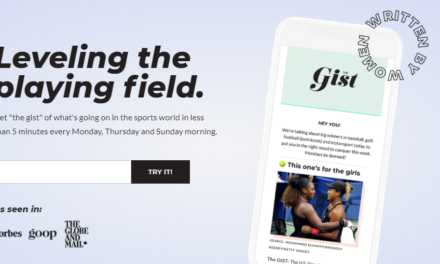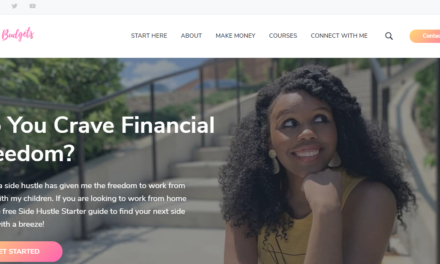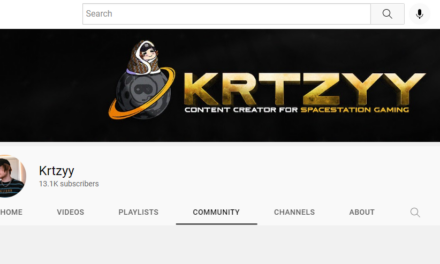full tilt
Print Strums a Big Hit
Jason Verlinde left the dot-com world to start a print magazine.
It was 2005. He had worked at Amazon for seven years, ever since the online bookstore expanded to sell CDs and hired music journalists like Jason for marketing and merchandising.
At Amazon, he got into the world of guitars and talked to musicians about their gear and tools of the trade. But he didn’t see the beautiful works of art in guitar magazines on newsstands. “Back then, they were trying to cater to the classic rock, hair-metal, really-loud audience, and I’m more like an NPR guy,” he explains.
So he went an unorthodox route for then (and today) and launched Fretboard Journal, a beautifully photographed, written, and designed magazine featuring the stories of the craftspersons, musicians, and their crafts.
Though still rarer in the digital world, printed content products remain a viable revenue stream, particularly in a diversified content business.
Fretboard Journal magazine was recently included in a newsletter article, Magazines We Love That Are Not Our Own, written by Mike Rogge, editor of Mountain Gazette.
“(These magazines) are all proof of the Great Print Revival happening with magazines at the moment,” Mike writes. “Magazines give a measured, thoughtful, insightful, and factual account of what’s happening in our world. If you’re tired of bullshit, subscribe to a good magazine.”
Jason, a print publisher for 19 years and counting, obviously agrees. “Certainly, a lot of print has died, but the model has evolved. The print that has died is sort of the older, bloated, or corporate model that doesn’t add up anymore. But under all of that is a bunch of us indie publishers who are making a go of it.”
Fretboard Journal launched with a website at the same time as the print edition where people could order their subscriptions (in those days, they also could mail a check or call.) The media outlet later expanded to social media and launched a podcast about 15 years ago. Today, Fretboard Journal also sends a weekly newsletter.
“It’s not like we’re antagonistic about digital marketing at all. It’s more that print is the cornerstone of what we do and where the bulk of our effort goes,” Jason says.
Though the voices have changed over 19 years, the format remains the same – 128 pages printed on high-end paper.
Advertising appears in the front and back of the magazine but never interrupts the text and visual storytelling that sometimes can cover 28 pages.
“I am constantly telling potential advertisers, let me send this product to you before you make a judgment about print being dead or you need a digital-first strategy,” Jason says.
Fretboard Journal and similar niche magazines can create an evergreen marketing campaign that never gets thrown away. “You’re standing behind a form of storytelling that really is different than a Facebook ad that’s going to disappear in a week after you pull it or decide it didn’t convert well,” Jason says. “A magazine like ours gets passed around from collector to collector.”
It also attracts some famous musicians who are passionate about their craft. Mike says interviewing the actor and comedian Steve Martin about his banjo collection is one of his favorites. Eddie Vedder of Pearl Jam has talked about his love for ukuleles, and singer-songwriter Ben Harper event interviewed one of his guitar heroes for the magazine.
Fretboard Journal magazine has about 10,000 subscribers and is sold in about 50 guitar stores around the United States.
Sometimes, subscribers switch their print subscription to digital-only to return to print a year later. “They’ll go, ‘You know what? I actually miss just being able to take it anywhere and unplug with it,’” Jason says.
Fretboard Journal is a virtual operation. Jason works from his office in Seattle, where the art director lives but whom he rarely sees because he works remotely. The journal also employs a copy editor. They work with freelance writers and photographers around the world. Oh, and the cloud storage software Dropbox is a critical member of the team, too.
Once the magazine has been designed, proofread, tweaked, and proofread again, it goes off to a printer in Washington state. From there, they’re sent to a mail house that ships the edition to subscribers and retail outlets.
Print accounts for about half of Fretboard Journal’s revenue. “It has been the ultimate business card to what we are all about,” Jason says.
He notes they now host six podcasts catering to specialty audiences, such as steel guitar makers, and sponsors for each, as well as an annual event, the Fretboard Summit. “This wouldn’t have happened if it weren’t for print,” Jason says.
– Ann Gynn
In addition to Fretboard Journal, Mountain Gazette’s Mike Rogge recommends these print titles: Height of Land, Bomb Snow, The Motoring Journal, Adventure Journal, Flagrant Magazine, Victory Journal, Whalebone, The Surfer’s Journal, The Golfer’s Journal, Freehub, Daybreak Magazine, HiHeyHello Magazine, Slush, and The Drake.
Shoutout to Tilt community member Alan Belniak for prompting this article by sending us the Mountain Gazette newsletter.
Supported by:
How to clean up your content operation
What people appreciate most from creators is the “craft” aspect of their content.
But behind any great machine is a foolproof process: the steady curation, logistics, and analytics to keep quality on point.
That’s the part we can help with. Here are five proven content strategy assets to help you focus campaigns and manage them with confidence.
Five fundamental resources:
- Buyer personas
- Strength-weakness analysis
- Content objectives and KPIs
- Content marketing maps
- Content timelines
Use these to make content connect, again and again.
content entrepreneur spotlight
Entrepreneur: Scott Martin
Biz: Groundswell Origins
Tilt: Sustainable growth marketing
Primary Channels: Podcast, book
Other Channels: X (11.3K), LinkedIn (11.1K), Instagram (10.6K), Facebook (17K), community, website (individual), website (business)
Time to First Dollar: First day
Rev Streams: Consulting, paid community, book
Our Favorite Actionable Advice
- Persistence pays off: Don’t hesitate to ask for the sale or partnership. Sometimes, the squeaky wheel gets the grease. The same holds for your content business. It takes time to grow and monetize an audience. Consistently show up for your audience, and they will reward you.
- Build an audience before you need it: You can’t immediately monetize your audience. Focus on building an audience even as a side hustle until you are ready to go full-time. It can mean earning your first dollar on day one as a full-time content entrepreneur.
- Pay attention to the audience you have: Don’t just focus on gaining new subscribers. Growth is necessary, but if you don’t take care of the audience you have, you start to lose trust and audience members.
– Marc Maxhimer
Read Scott Martin’s story.
things to know
Money
-
Short or long: Though TikTok updated its creator fund to reward videos running more than 60 seconds, brands still favor creators making short-form content. [PR Week]
Tilt Take: Lean into the model that works best for your content brand, not the third-party app or sponsor. -
Affiliate add: Linktree (of link-in-bio fame) adds an affiliate marketing program with brands like Sephora and Urban Outfitters. Creators who participate receive a 12% to 15% commission. Though Linktree isn’t taking a cut, that’s likely only a matter of time. [Tubefilter]
Tilt Take: Affiliate marketing works best when the creator promotes products that they use and relate to their audience. And transparency matters, too.
Audiences
-
Non-social readers: New research finds social engagement – reactions, comments, and shares – has no clear connection to readership – unique visitors to news articles. [Memo]
Tilt Take: Does your data show social doesn’t drive traffic to your site? Might be time to rethink your social strategy. -
Less X: The Infinite Dial 2024 reports only 19% of the US population uses X. That’s a 30% drop from 2023. [Edison Research]
Tilt Take: Expect the number to drop further in 2024, especially for “active” users.
Tech and Tools
-
Not ready: Threads will now let users save drafts and take photos from the app. [Tech Crunch]
Tilt Take: Save that hot take as a draft before you hit publish and regret it. -
Watching: LinkedIn has shared who viewed your profile for years, and now it’s highlighting “interesting viewers” in that group. They include LinkedIn influencers, people who can get you a job, work for a company you follow, are a senior leader in your niche, etc. [Matt Navarra]
Tilt Take: Not sure it’s worth paying for a premium subscription to see all those names.
And Finally
-
Country celebration: India’s prime minister handed out the first National Creators Award in multiple categories and asked creators to start a “Create on India” movement. [The Times of India]
Tilt Take: A government celebration of creators prompts contemplation. -
Moving time: US government debate about banning TikTok prompted one creator to tell an SXSW audience: “Build your brand out, think about every platform. Once I got bigger on TikTok, I right away was like, okay, it’s time to start on Instagram. What can I do next?” [The Observer]
Tilt Take: Not sure going from one third-party app to another is the best move for a long-term sustainable content business.
the business of content
- Can You Really Support Your Business With Just 1,000 True Fans? (Publish & Prosper)
- Did the Content Creator Bubble Burst? (Content Inc.)
- 12 Secrets to Content Marketing Success (This Old Marketing)
- Rebranding hits this week’s Tilt Your Business: A Weekly Mastermind for Content Entrepreneurs. See you at 12 p.m. US EDT Tuesday.
- Ticket prices for Content Entrepreneur Expo go up at the end of March. Be sure to get your ticket early!
Get more of the Full Tilt stories on TheTilt.com.
Know a content creator who’s going full tilt? DM us or email [email protected].
Want to advertise on The Tilt? Go here.
Or email us at [email protected].
Was this email forwarded to you? Get your own sub here.
Copyright ©2024 Lulu Press, Inc. All rights reserved.
Update your preferences | Unsubscribe | 700 Park Offices Dr., Suite 250, Durham, NC 27709







